Hyundai Tucson vs Mercedes CLA Coupe – Which model is better for everyday use?
Both models have their strengths – but which one suits you more?
Compare performance, efficiency, price and space directly: Hyundai Tucson or Mercedes CLA Coupe?
Costs and Efficiency:
Price and efficiency are often the first things buyers look at. Here it becomes clear which model has the long-term edge – whether at the pump, the plug, or in purchase price.
Hyundai Tucson has a distinct advantage in terms of price – it starts at 30600 £, while the Mercedes CLA Coupe costs 37100 £. That’s a price difference of around 6468 £.
Fuel consumption also shows a difference: Hyundai Tucson manages with 1 L and is therefore significantly more efficient than the Mercedes CLA Coupe with 2.30 L. The difference is about 1.30 L per 100 km.
As for range, the Mercedes CLA Coupe performs clearly better – achieving up to 791 km, about 721 km more than the Hyundai Tucson.
Engine and Performance:
Power, torque and acceleration say a lot about how a car feels on the road. This is where you see which model delivers more driving dynamics.
When it comes to engine power, the Mercedes CLA Coupe has a clearly edge – offering 421 HP compared to 252 HP. That’s roughly 169 HP more horsepower.
In acceleration from 0 to 100 km/h, the Mercedes CLA Coupe is decisively quicker – completing the sprint in 4.10 s, while the Hyundai Tucson takes 7.90 s. That’s about 3.80 s faster.
In terms of top speed, the Mercedes CLA Coupe performs clearly perceptible better – reaching 270 km/h, while the Hyundai Tucson tops out at 194 km/h. The difference is around 76 km/h.
There’s also a difference in torque: Mercedes CLA Coupe pulls clearly perceptible stronger with 515 Nm compared to 367 Nm. That’s about 148 Nm difference.
Space and Everyday Use:
Cabin size, boot volume and payload all play a role in everyday practicality. Here, comfort and flexibility make the difference.
Both vehicles offer seating for 5 people.
In curb weight, Mercedes CLA Coupe is minimal lighter – 1505 kg compared to 1520 kg. The difference is around 15 kg.
In terms of boot space, the Hyundai Tucson offers noticeable more room – 620 L compared to 460 L. That’s a difference of about 160 L.
When it comes to payload, Hyundai Tucson somewhat takes the win – 545 kg compared to 490 kg. That’s a difference of about 55 kg.
Who comes out on top?
Overall, the Mercedes CLA Coupe shows itself to be is largely superior and secures the title of DriveDuel Champion.
It convinces with the more balanced overall package and proves to be the more versatile choice for everyday use.
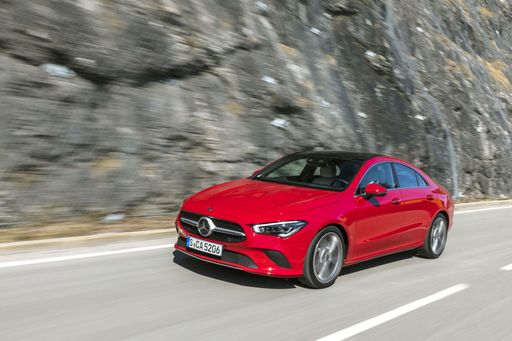
Mercedes CLA Coupe
Hyundai Tucson
The Hyundai Tucson is a standout choice in the compact SUV segment, offering a perfect blend of style, comfort, and practicality. Its modern design is complemented by a spacious interior that provides ample room for passengers and luggage alike. With advanced technology and safety features, the Tucson ensures a smooth and enjoyable driving experience.
details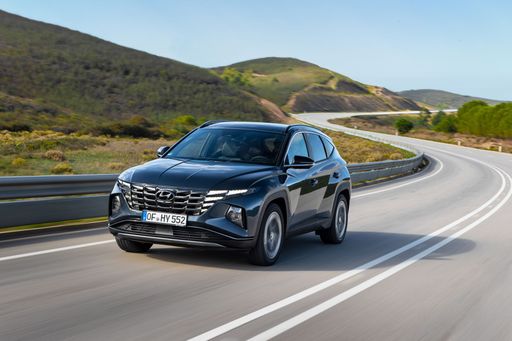 @ hyundai.news
@ hyundai.news
 @ hyundai.news
@ hyundai.news
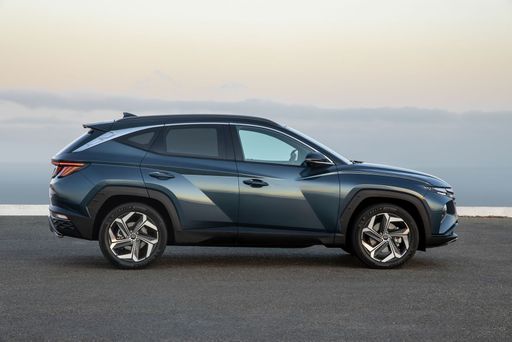 @ hyundai.news
@ hyundai.news
 @ hyundai.news
@ hyundai.news
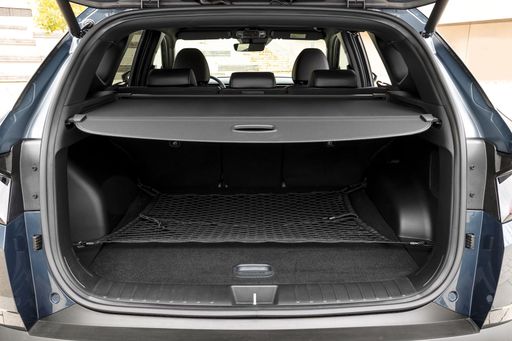 @ hyundai.news
@ hyundai.news
Mercedes CLA Coupe
The Mercedes-Benz CLA Coupé exudes sophistication with its sleek, aerodynamic design that effortlessly combines elegance and sportiness. Inside, the cabin offers a luxurious experience, featuring high-quality materials and state-of-the-art technology that ensure both comfort and connectivity for the driver and passengers. On the road, the CLA Coupé delivers a dynamic driving performance, characterised by responsive handling and a smooth ride, making it a joy to drive both in the city and on long journeys.
details @ group-media.mercedes-benz.com
@ group-media.mercedes-benz.com
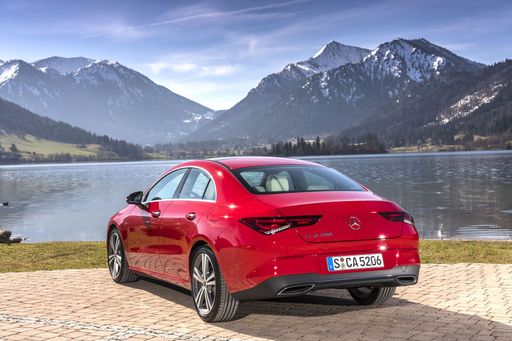 @ group-media.mercedes-benz.com
@ group-media.mercedes-benz.com
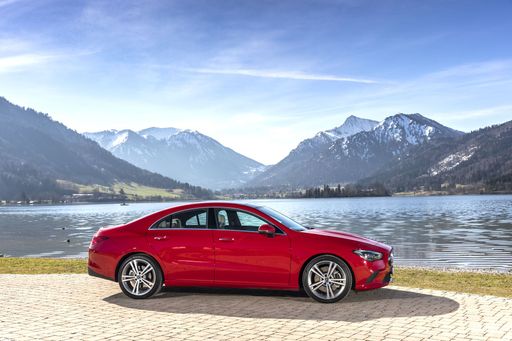 @ group-media.mercedes-benz.com
@ group-media.mercedes-benz.com
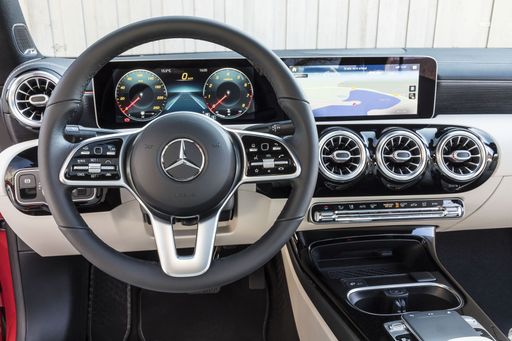 @ group-media.mercedes-benz.com
@ group-media.mercedes-benz.com

|

|
|
|
|
Costs and Consumption |
|
|---|---|
|
Price
30600 - 46300 £
|
Price
37100 - 73700 £
|
|
Consumption L/100km
1 - 6.9 L
|
Consumption L/100km
2.3 - 8.9 L
|
|
Consumption kWh/100km
-
|
Consumption kWh/100km
12.2 - 12.6 kWh
|
|
Electric Range
64 - 70 km
|
Electric Range
86 - 791 km
|
|
Battery Capacity
-
|
Battery Capacity
12.9 - 85 kWh
|
|
co2
22 - 156 g/km
|
co2
0 - 202 g/km
|
|
Fuel tank capacity
42 - 54 L
|
Fuel tank capacity
35 - 51 L
|
Dimensions and Body |
|
|---|---|
|
Body Type
SUV
|
Body Type
Coupe
|
|
Seats
5
|
Seats
5
|
|
Doors
5
|
Doors
4
|
|
Curb weight
1520 - 1889 kg
|
Curb weight
1505 - 2135 kg
|
|
Trunk capacity
546 - 620 L
|
Trunk capacity
395 - 460 L
|
|
Length
4510 - 4520 mm
|
Length
4692 - 4723 mm
|
|
Width
1865 mm
|
Width
1834 - 1857 mm
|
|
Height
1650 mm
|
Height
1404 - 1468 mm
|
|
Max trunk capacity
1721 - 1799 L
|
Max trunk capacity
-
|
|
Payload
525 - 545 kg
|
Payload
440 - 490 kg
|
Engine and Performance |
|
|---|---|
|
Engine Type
Diesel MHEV, Petrol MHEV, Petrol, Full Hybrid, Plugin Hybrid
|
Engine Type
Plugin Hybrid, Petrol MHEV, Diesel, Petrol, Electric
|
|
Transmission
Automatic, Manuel
|
Transmission
Automatic
|
|
Transmission Detail
Dual-Clutch Automatic, Manual Gearbox, Automatic Gearbox
|
Transmission Detail
Dual-Clutch Automatic, Reduction Gearbox
|
|
Drive Type
Front-Wheel Drive, All-Wheel Drive
|
Drive Type
Front-Wheel Drive, All-Wheel Drive, Rear-Wheel Drive
|
|
Power HP
136 - 252 HP
|
Power HP
116 - 421 HP
|
|
Acceleration 0-100km/h
7.9 - 11.6 s
|
Acceleration 0-100km/h
4.1 - 10 s
|
|
Max Speed
180 - 194 km/h
|
Max Speed
205 - 270 km/h
|
|
Torque
265 - 367 Nm
|
Torque
230 - 515 Nm
|
|
Number of Cylinders
4
|
Number of Cylinders
4
|
|
Power kW
100 - 185 kW
|
Power kW
85 - 310 kW
|
|
Engine capacity
1598 cm3
|
Engine capacity
1332 - 1991 cm3
|
General |
|
|---|---|
|
Model Year
2024
|
Model Year
2024 - 2025
|
|
CO2 Efficiency Class
E, F, D, B
|
CO2 Efficiency Class
B, D, E, G, A
|
|
Brand
Hyundai
|
Brand
Mercedes-Benz
|
What drive types are available for the Hyundai Tucson?
Available configurations include Front-Wheel Drive or All-Wheel Drive.
The prices and data displayed are estimates based on German list prices and may vary by country. This information is not legally binding.
